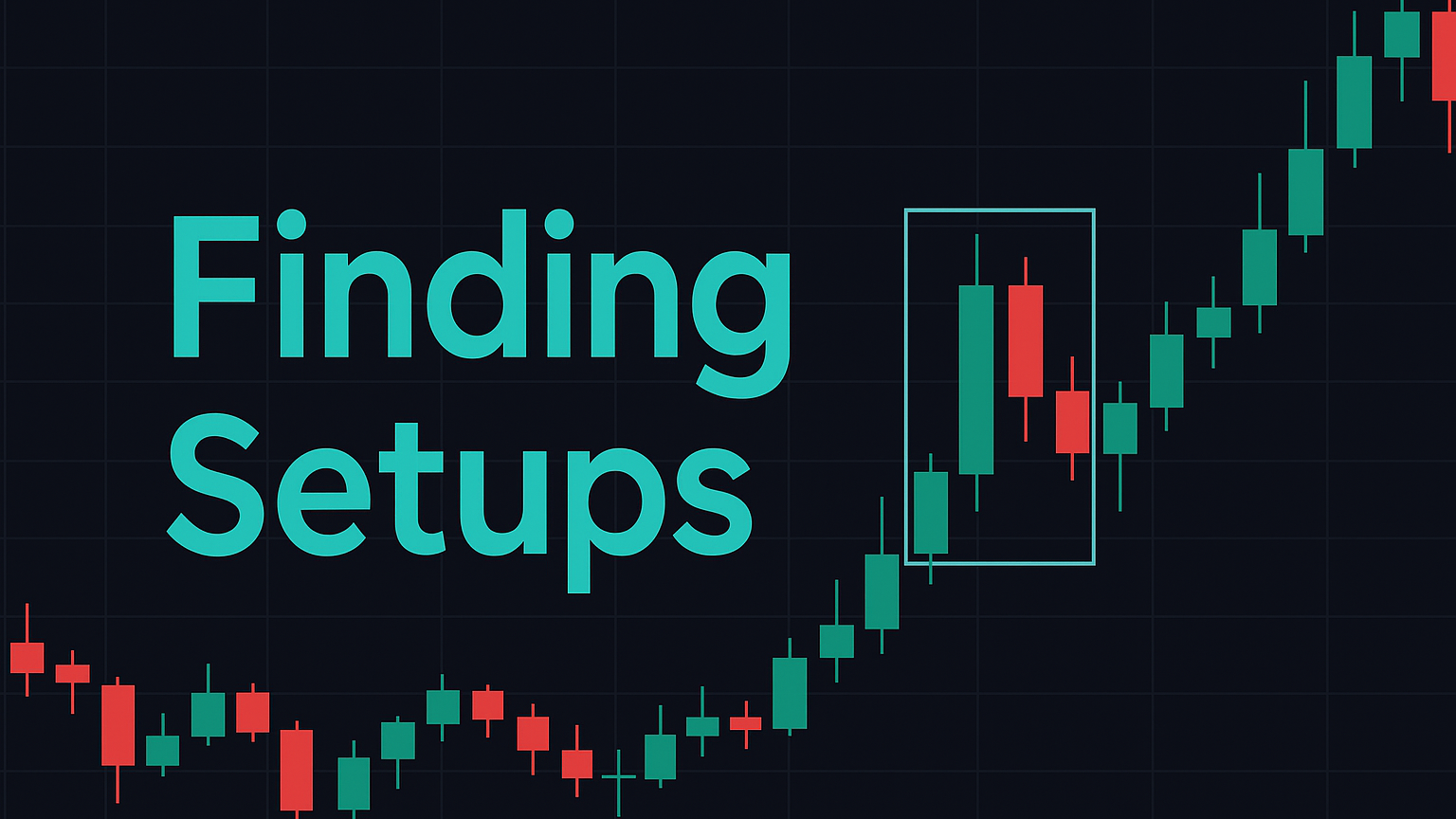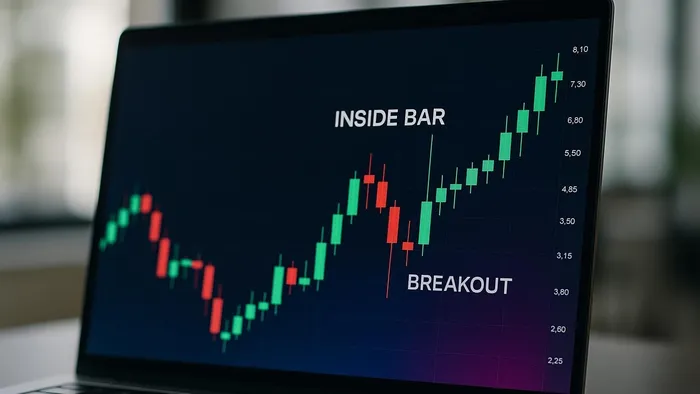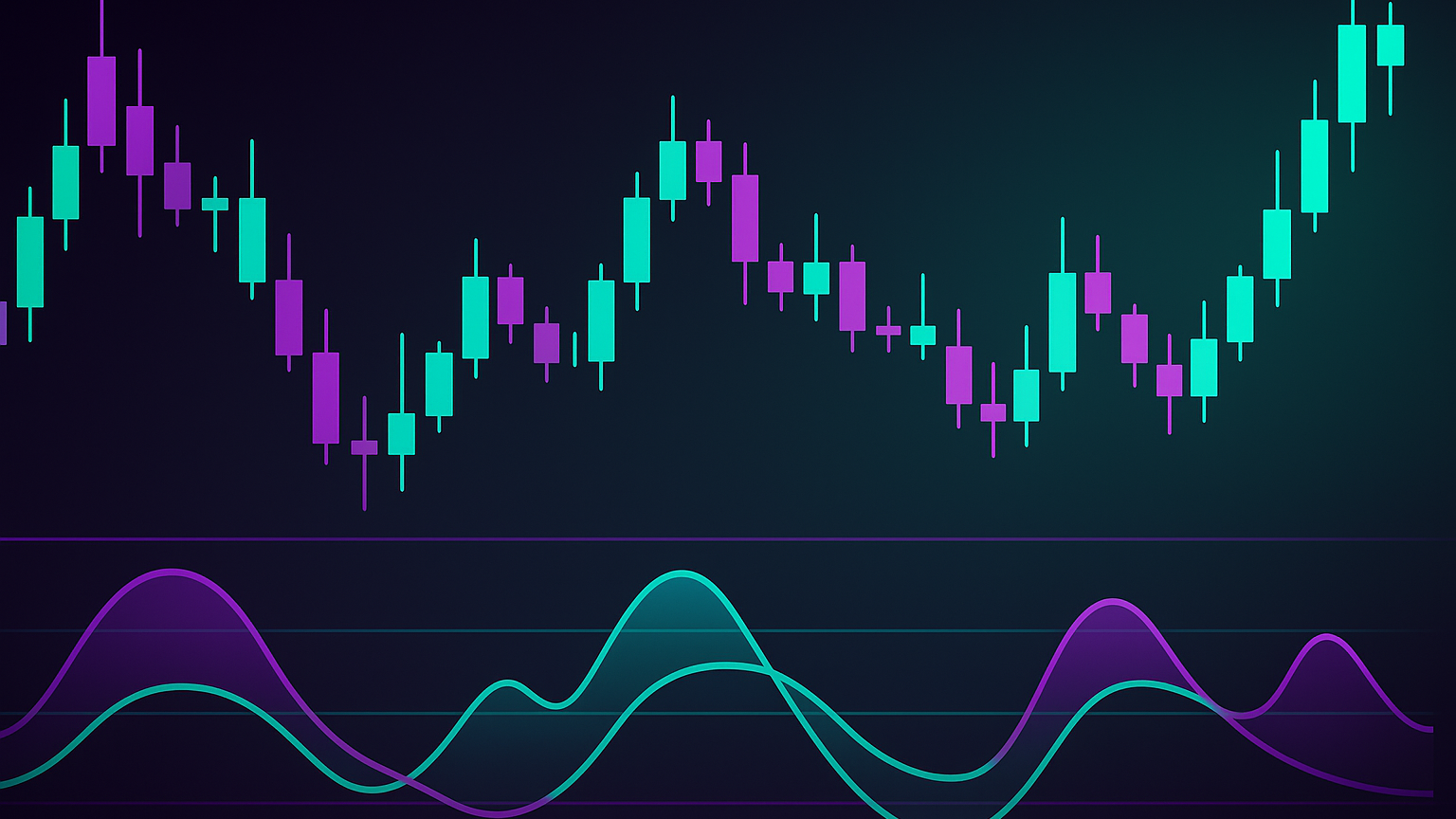Explore the power of inside bar breakouts for trading, focusing on tight risk controls and high reward potential with clear strategies.
Inside-bar breakouts are a simple yet powerful trading strategy offering tight risk control and big reward potential. Here's the essence:
-
What Is an Inside Bar?
It is a two-bar pattern where the second (inside) bar forms entirely within the range of the first (mother) bar, showing a lower high and higher low. This signals market consolidation before a potential breakout. -
Why Use It?
- Clear entry and stop-loss placement.
- High reward-to-risk ratios (1 : 5 or more).
- Works across markets such as stocks, forex, and crypto.
-
How to Trade It?
- Entry Rules: Buy above the mother bar's high or sell below its low.
- Stop-Loss Placement: Opposite end of the mother bar.
- Best Timeframe: Daily charts for cleaner signals and fewer false breakouts.
-
LuxAlgo Shortcuts:
LuxAlgo’s platform includes the Signals & Overlays (S&O) toolkit and the Price Action Concepts (PAC) toolkit, which provide contextual overlays, momentum gauges, and breakout tools that complement inside-bar setups once you have identified the pattern.
Takeaway: Inside-bar breakout trading is all about patience, precision, and disciplined risk management. Stick to strong trends, use tight stop-losses, and aim for high reward-to-risk setups.
Finding Strong Inside-Bar Setups
Chart Analysis Methods
To spot solid inside-bar setups, look for a mother bar followed by a smaller bar that stays completely within the mother bar's range. LuxAlgo’s Price Action Concepts toolkit and the PAC Toolkit documentation can streamline your workflow by mapping structure levels and key zones around the pattern, helping you validate its context.

Here is what defines a strong inside-bar setup:
- A valid inside bar will have a lower high and a higher low compared with the mother bar.
- The inside bar is smaller in size, signalling tight consolidation within the market.
These characteristics set the stage for better entry decisions when preparing for potential breakouts.
"As the name implies, an inside bar forms inside of a large candle called a mother bar. It's a pattern that forms after a large move in the market and represents a period of consolidation." – Justin Bennett
Market Context Analysis
After spotting the pattern, analyse the market context to gauge its reliability. This step ensures you are not just identifying the setup but also understanding its potential strength.
Key factors to check:
- Trend alignment – inside bars that align with the dominant trend often present stronger trading opportunities.
- Post-breakout formation – when an inside bar appears after a significant price breakout from consolidation, it may signal continuation.
- Key-level proximity – inside bars forming near major support or resistance levels usually carry more weight.
Avoid trading inside bars during periods of low market activity, for example major holidays, because these conditions often lead to unreliable signals.
Best Timeframe Selection
The daily chart is widely regarded as the go-to timeframe for trading inside bars. Sub-daily charts often introduce unnecessary noise and increase the risk of false signals. Higher timeframes offer distinct benefits:
- Filter out market noise, providing cleaner signals.
- Patterns are more pronounced because of the extended time for development.
- Help mitigate the impact of unexpected news events.
Trading Inside-Bar Breakouts
Entry Rules and Signals
The key to trading inside-bar breakouts is timing your entry when the price moves outside the mother bar's range. LuxAlgo’s S&O signal modes and the S&O Screener can monitor momentum and breakout strength around the pattern across dozens of tickers.
Buy when the price pushes above the mother bar's high, and sell short when it drops below the mother bar's low. These straightforward signals pave the way for precise stop-loss placement and a solid risk-reward strategy.
Stop-Loss Placement
The opposite end of the mother bar acts as a logical spot to define your risk.
- For long trades – place the stop loss just below the mother bar's low.
- For short trades – place the stop loss just above the mother bar's high.
This approach ensures you are limiting potential losses while giving the trade room to breathe.
Risk-Reward Setup
Start by measuring the distance between your entry point and the stop loss. Use this to calculate position size. Then set profit targets that provide a favourable risk-reward ratio.
Managing Failed Breakouts
Spotting False Signals
Sometimes inside-bar breakouts create what is known as a Fakey pattern. This happens when the price briefly moves beyond the mother-bar range only to reverse back inside. A pin bar often forms during the reversal, hinting at stop-hunting activity by institutional traders.
Trade Recovery Steps
- Immediate Assessment – look for a two-bar pattern: one bar closes outside the range, followed by another closing back inside. This setup might present an opportunity to trade in the reversal direction.
- Counter-Trade Opportunity – a failed breakout can sometimes lead to a strong reversal trade. One approach is to enter as the price moves past the inside bar’s high or low after the false breakout.
Trading Examples
Trading Process Guide
Below is a straightforward guide to using LuxAlgo's toolkits alongside inside-bar breakout opportunities for tight risk control and high reward.
- Setup Identification – start with the PAC Screener on the daily chart to locate strong trends. The Oscillator Matrix Screener can confirm momentum conditions.
- Entry Execution – place orders based on the mother-bar range. In an up-trend, position a buy stop just above the high; in a down-trend, set a sell stop just below the low. Your stop loss goes at the opposite end of the mother bar.
Market Examples
S&P 500 Daily Chart (March 2024)
- Entry – buy stop at $5 175 (mother-bar high)
- Stop Loss – $5 125 (mother-bar low)
- Initial Target – $5 275, aiming for roughly 2 : 1 reward-to-risk
- Outcome – price extended to $5 320, delivering about 2.9 : 1
"Inside bars typically offer good risk-reward ratios because they often provide a tight stop-loss placement and lead to a strong breakout as price breaks up or down from the pattern." – Nial Fuller
EUR/USD Daily Chart (February 2024)
- Market Context – price broke below key support at 1.0850.
- Mother Bar – large bearish candle reflecting intense selling pressure.
- Inside Bar – formed near the lower end of the range.
- Entry – sell stop at 1.0780.
- Stop Loss – 1.0820.
- Result – price dropped to 1.0680, achieving roughly 3 : 1.
"Truth is, a favourable inside bar setup doesn't come around often… It is mostly because this strategy requires a strong trend that is not yet exhausted." – Justin Bennett
These examples show how combining inside-bar patterns with strong market context and disciplined risk management can yield successful trades. LuxAlgo's toolkits supply structure mapping, momentum confirmation, and alerting features that work alongside the pattern to refine execution.
Inside-Bar Breakout Strategy: A POWERFUL Candlestick Trading Signal
Summary
Inside-bar breakout trading offers a straightforward approach to spotting high-reward opportunities by using the mother bar to place stop-loss orders strategically. The method's reliability comes from its well-defined structure and clear rules.
To simplify this process, LuxAlgo's Price Action Concepts toolkit overlays structure levels and momentum gauges that help refine entries once you have spotted an inside-bar setup. Its screener tools can surface potential markets on daily charts, and you can quickly validate and optimise trade rules with LuxAlgo's AI Backtesting Assistant.
Key elements for successful inside-bar breakout trading:
- Trade Direction – follow the dominant trend.
- Risk Management – set stop-loss levels at the opposite end of the mother bar.
- Timing – prioritise inside bars that appear after strong momentum moves near critical levels.
"It's all about waiting for the better setup and not trying to trade every single inside bar that forms, and with such high risk/reward potential you can afford to lose a few trades and remain ahead in the long run." – Anatasius
By combining LuxAlgo's automated toolkits with solid risk-management practices, traders can consistently identify and execute inside-bar breakout trades aiming for at least a 2 : 1 reward-to-risk ratio.
FAQs
How does the inside-bar breakout strategy help manage risk while offering high reward potential?
The inside-bar breakout strategy lets traders set tight stop-loss orders, typically at the opposite end of the mother bar. This keeps risk contained while aiming for reward-to-risk ratios such as 1 : 5 or even 1 : 10.
What mistakes should traders avoid when using the inside-bar breakout strategy?
Avoid trading inside bars in sideways markets, entering before the breakout is confirmed, placing stops too close to the entry, and ignoring confluence from complementary indicators.
How does LuxAlgo's Price Action Concepts toolkit improve trading strategies for inside-bar breakouts?
LuxAlgo's Price Action Concepts toolkit provides structure mapping, breakout dashboards, and risk-reward tools that work neatly alongside inside-bar setups. These overlays make it easier to plan entries, exits, and position sizing with confidence.
References
- Range-Breakout Signals (Intrabar)
- Best Timeframe for Trading
- Breakouts with Tests & Retests
- LuxAlgo Home
- Price Action Concepts Indicator
- LuxAlgo Toolkits Overview
- Risk-Management Article
- OSC Reversal Signals
- Oscillator Matrix Screener Elements
- Signals & Overlays Toolkit
- AI Backtesting Assistant
- S&O Screener Introduction
- PAC Screener Introduction
- S&O Signal Modes
- PAC Toolkit Overview








